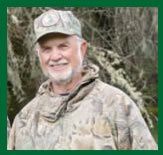Waterfowl Hunting
by Terry Knight
October signals the start of the fall bird hunting season. The waterfowl and quail season gets underway in October and the pheasant and fall turkey season opens in November.
This year, because of the drought, many of the duck clubs in
the Sacramento Valley will be scrambling for water. The two
 major lakes that supply water to the duck clubs in the valley are
Lake Shasta and Lake Oroville, but are at record lows and water
will be rationed. According to W.U. President, Rick Copeland,
they hope to have sufficient water supplies for most W.U. duck
properties.
major lakes that supply water to the duck clubs in the valley are
Lake Shasta and Lake Oroville, but are at record lows and water
will be rationed. According to W.U. President, Rick Copeland,
they hope to have sufficient water supplies for most W.U. duck
properties.
The good news is that this year there will be a very liberal waterfowl season. The daily duck limit will be seven birds of which two can be pintails. The goose season will also be one of the most liberal in decades with an eight bird daily limit. Be sure and check out the regulations for the complete rules on bag limits and other requirements.
As expected after the opening weekend the duck hunting will slow down slightly until the northern birds arrive, but that’s no reason not to be out in the duck blind. If you plan your hunt correctly you will still be able to have an enjoyable hunt.
Here are a few tips that may just help you bring home a limit of ducks:
- Make sure your decoy placement is correct. Remove any damaged decoys and allow an open space in front of your blind for the birds to zero in on. If the area you are hunting allows you to bring some of your decoys, use the super mag ones because the ducks can see them from a greater distance.
- Motor driven rotating wing decoys can’t be used until Dec.1, but there are several brands of wind-powered ones that are legal early in the season. Without question either the motor or wind driven decoys are extremely effective. Place it at least 15 yards out from the farthest decoy so the incoming birds can see it.
- When it comes to calling, call only enough to keep the incoming ducks interested. Too many hunters call nonstop and that can scare the ducks away. Once the ducks have set their wings and are coming to the decoys, either quit calling or only use the chuckle.
- Make sure you’re completely camouflaged and that includes a face mask and gloves. Also make sure your blind is completely covered.
- Don’t give up hunting too early. In fact, some of the best hunting can occur in the afternoons. The reason being that many of the other hunters have left the area and you can work birds without them being shot at by hunters in neighboring blinds. Also, it’s not uncommon for winds to come up in the afternoon which will move the ducks. Take a lunch and a book and sit back and relax until the birds start flying. One advantage that W.U. duck hunters have is that once they reserve a blind they can wait until the afternoon to hunt. W.U. does have a rule that if you aren’t in your blind by 30 minutes before shoot time, you have to wait until after 9 a.m. to go to your blind.
- Take a youngster hunting. W.U. is a family organization and encourages its members to take their kids hunting.
